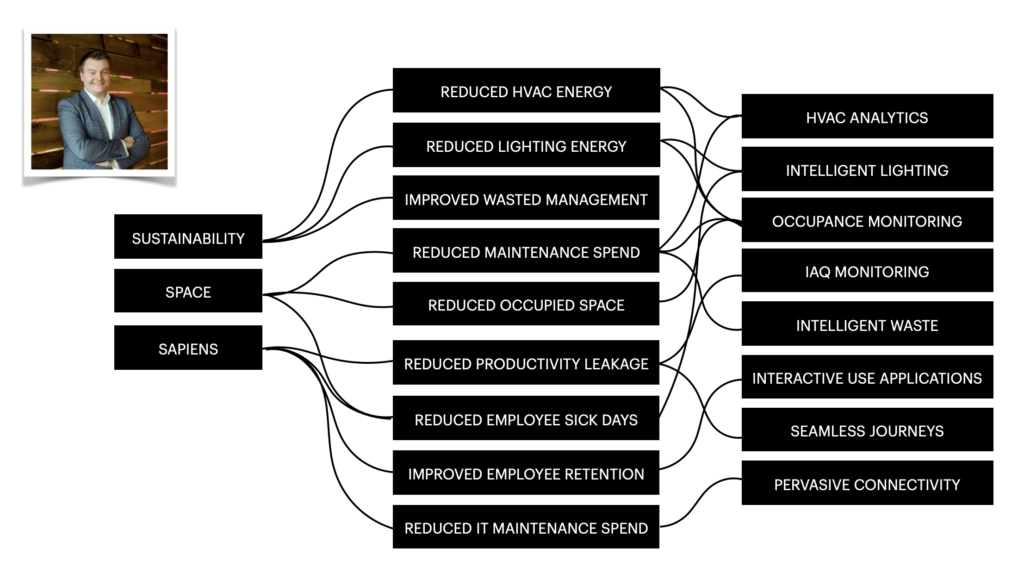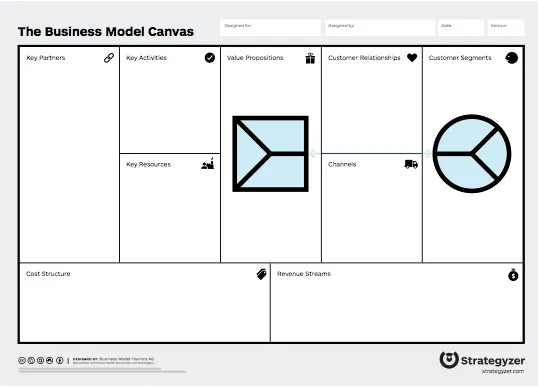
I didn’t go to many of the conference sessions at the Smart Buildings Show this year because I was mostly there for the networking. But one of the few I did attend was the No Regrets – How Smart Buildings Are Valuable in Uncertain Times one by Matthew Marson from JLL Technologies. Matthew had kindly participated in the retrofit-themed panel I’d moderated the previous day, so I had some idea about what he’d be covering.
He’s an ex-Accenture consultant who helped set up the smart building/tech offerings for WSP and Arcadis, so what interested me most was his thoughts on what should be measured and why for Smart Building ROI. It’s the focus of a new book he is writing that follows on from his PhD.
As the diagram shows above, the way he looks at this is based around a 3Ss version of 3Ps:
- Sapiens (People)
- Sustainability (Planet)
- Space (Place)
What struck me as interesting was the way he maps those vectors to types of available tech via reducing (pains) and improving (gains) jobs-to-be- done, e.g. the mapping of ‘reduced lighting energy’ to ‘intelligent lighting’. That’s very much along the design thinking lines I mentioned in an earlier post (see more here) and anyone who is familiar with the various canvas-tools from folks at Strategyzer will be know that looking at those factors can be used to develop value propositions:

I’ve highlighted the canvas above because beyond using insights gained from customer enquiry to help ensure Product-Market fit, it can also be use to better communicate those value propositions to different customer segments, hence the canvas nesting in Strategyzer’s Business Model one below (see Business Model Canvas Vs. Value Proposition Canvas at 4 Week MBA):

I plan to come back to that customer-centricity in future posts, but the way Matthew looks at ROI here could – perhaps should – be the way in which the value proposition of solutions are framed. At the same time, it might also be a way of slicing and dicing the smart building technology landscape.



